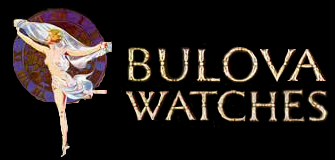Hi all looking at the adverts for bulova watches from the 30s and 40s l was wondering what the equivelent cost would be in todays money. As the average price in the forties seem to have been around 47 dollars , were these expensive watches when comparing them with the average wages for that time ?
As im english l dont know what the wages were in the US in the 30s or 40s comparing them with average wages of today. Maybe some of the more senior of our US members will be able to enlighten me .
Kind regards to all
there is such a handy tool that you recalculate the price to the present ratios. While this is not exactly what you're looking for, but it's interesting information.
I have several vintage Bulovas in my display case, specifically to point out that prices today are actually similar. To get the quality of a swiss made Bulova in the 40s-50s, today you are spending around $450 and up. This is the equivalent of spending $39-$49 back in the day.
In reply to I have several vintage by Reverend Rob
The overall average salary in the US in 1935 was $31.50 per week. The average person didn't buy a Bulova watch. Especially in the South where I grew up. Nearly everyone's lively hood depended on cotton. Either growing it, picking it, or working in the cotton mills. My Dad was born in 1919 and I remember him telling me he started working in the cotton mill for 25 cents an hour.
I remember an old ad which showed the rates to buy a Bulova on time, and one rate was 50 cents a week or thereabouts. With that you could buy maybe a $25 dollar watch, with $1 going to interest. Jewellers still do this of course, but it tends to be the higher end stuff.
When I was growing up, I remember a lot of the adults had generic Swiss watches. I know this because my Grandfather was a watchmaker, and he showed me the types of watches he worked on, and he did all the family's watches of course. Back in the day, pocket watches were still a going concern, and he serviced a lot of Walthams and Elgins. This would have been in the thirties and 40's and my mother and her siblings still recall very vividly what he talked about when he talked shop. I have some of his tools, and I use them still.
Thanks to all who replied to my question. It ws just my cureoity with regardsto how prices an the costs of things like watches over the years. I know when l first started work my wage was 4 ponds a week l think this equates to about 7 dollars and you buy a timex for around 17 pounds
Some interesting price comparisons from 1971-74:
Yes the prices for mechanical watches seem to still have a strong following .take omaga's and rolex l have two of each and l bought all of them second hand but still had to pay 1500 to 2000 pounds each. But the one thing l really like about bulova's is the amount of different shapes and designs of the older models .

